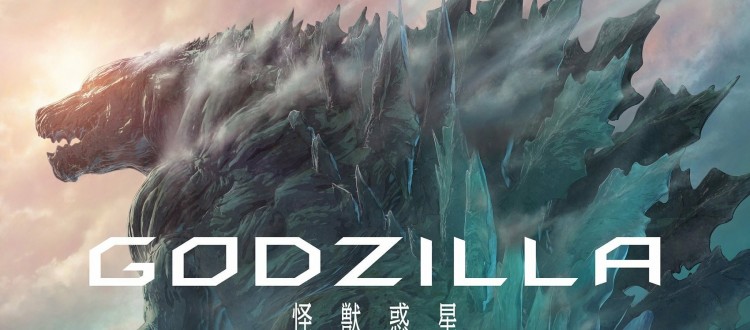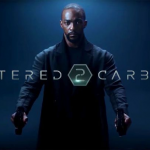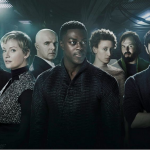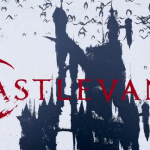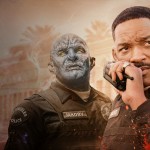Godzilla: Planet of the Monsters: Reviewed
Director: Hiroyuki Seshita, Kôbun Shizuno
Starring: Chris Niosi, Danny Boston, Martin Billany
Let’s start with my banal but honest truth when it comes to Godzilla: I don’t need any more Godzilla movies to feel like I am living my best life. I’m a Canadian born in the early 1980s, and the idea of a monster that represents the collective hubris of man stumbling ass-over-tea kettle into the nuclear-era strikes as profoundly sophomoric and rooted in a nostalgia to which I have no personal connection. At its worst, Godzilla is kitsch. At best, Godzilla gets put on the same shelf of fiction-turned-historical artefact as War of the Worlds. The subtexts and themes of both are evergreen, but stories where Humanity wins for losing have iterated into more interesting things.
Enter the first part of a new Godzilla trilogy, and the reason why I’m probably not going to be getting a new season of Knights of Sidonia or another Blame! movie any time soon. Whinging aside, Planet of the Monsters is better than I expected. I wouldn’t go so far as to call it great, but it is competent. It could have been a good movie were it not for a script that never seems to grasp that people don’t show up to a monster movie to hear space elves talk about a math-based religion.
The Polygon Pictures’ aesthetic of a broken down future is in full effect amid a story that subverts the Battlestar Galactica trope of searching for a new home amid planetary disaster (i.e. Godzilla driving humanity from Earth). The movie begins on a colony ship where the last humans, and a smattering of alien refugees who found their way to Earth before the evacuation, are executing a cull against the ship’s elderly residents. Following this lesson in monstrous utilitarianism, a little civil unrest mixes with alien religion and the faintest hope that this last remnant of three species might kill Godzilla and reclaim Earth. Sufficed to say, it is a busy first act. A bit of space magic allows the colony ship to return to Terra Familia a relativistic 20,000 years after abandoning Earth to Godzilla and his monsterous brethren. With only 20 years passing on the ship, it’s not the tightest bit of science fiction, but it is a necessary hand wave. Fighting Godzilla amid the fossils of human civilization, rather than the dilapidated ruins of 20th century urban planning, adds an otherworldly nature to a setting that would otherwise be dull and familiar. If only the movie would have shut up and let the audience experience this place rather than explaining it away. Where there should be a sense of majesty about this primordial future-ancient Earth, there are characters teching the tech and generally killing the mood.
On a more interesting note, the return to Earth introduces a new emotional crux for why humanity is fighting Godzilla. Hubris might be part of the movie’s DNA, but just as change and mutation are themes within this story, so too does the ethos of Godzilla evolve. We learn it is the shame of fleeing from Earth that energizes humanity and its alien allies to reclaim the Earth. It’s a motivation that draws perhaps too heavily on Scouting Legion speeches from Attack on Titan, but it sticks the landing after so much techno-speak.
There’s a mix of predictability and satisfaction once the humanoid army engages Godzilla. Prior to that, too much of the lead-up to the battle hinges on a writer showing off their knowledge of 19th century military manuals while spewing sci-fi jargon with an intensity that would make a Star Trek writer blush. Traps, ambushes, and the parsing of combat units into operational cohorts can be boiled down to “shoot the monster in its weak spot.”
Yet the actual fight against Godzilla is bold enough to redeem a laggard second act. Powered armour and flying motorcycles present as little more than insects buzzing about Godzilla’s lumbering bulk. The juxtaposition of an alien Earth against the otherworldly nature of Godzilla presents a monster movie that has evolved beyond the form and function of a conventional kaiju story. Instead, we can see Godzilla as a sort of planetary horror. Godzilla is too knowable to qualify for being a cosmic horror, too easily understood by science – despite the plot threads that hint at every great species meeting its own Godzilla as a divine punishment for arrogance. However, Godzilla’s sheer strength, its ability to fell humanity’s intrigues and interplanetary vessels with a blast of radioactive breath, elevates it far beyond being a simple monster. Godzilla has become something new and Planet of the Monsters serves as the vehicle for, eventually, showing this metamorphosis.
Far from being the most evenly paced or well-constructed anime film of recent memory, the first part of the new Godzilla tryptic does manage to find some solid footing. The key to this is less in characters or dialogue and much more in an image of Godzilla that is light years removed from men in rubber suits stepping on models. I’d still trade it for a third season of Knights of Sidonia and a warm beer, mind you, but I suppose it has managed to do the unexpected and make me interested in at least one more Godzilla movie.

